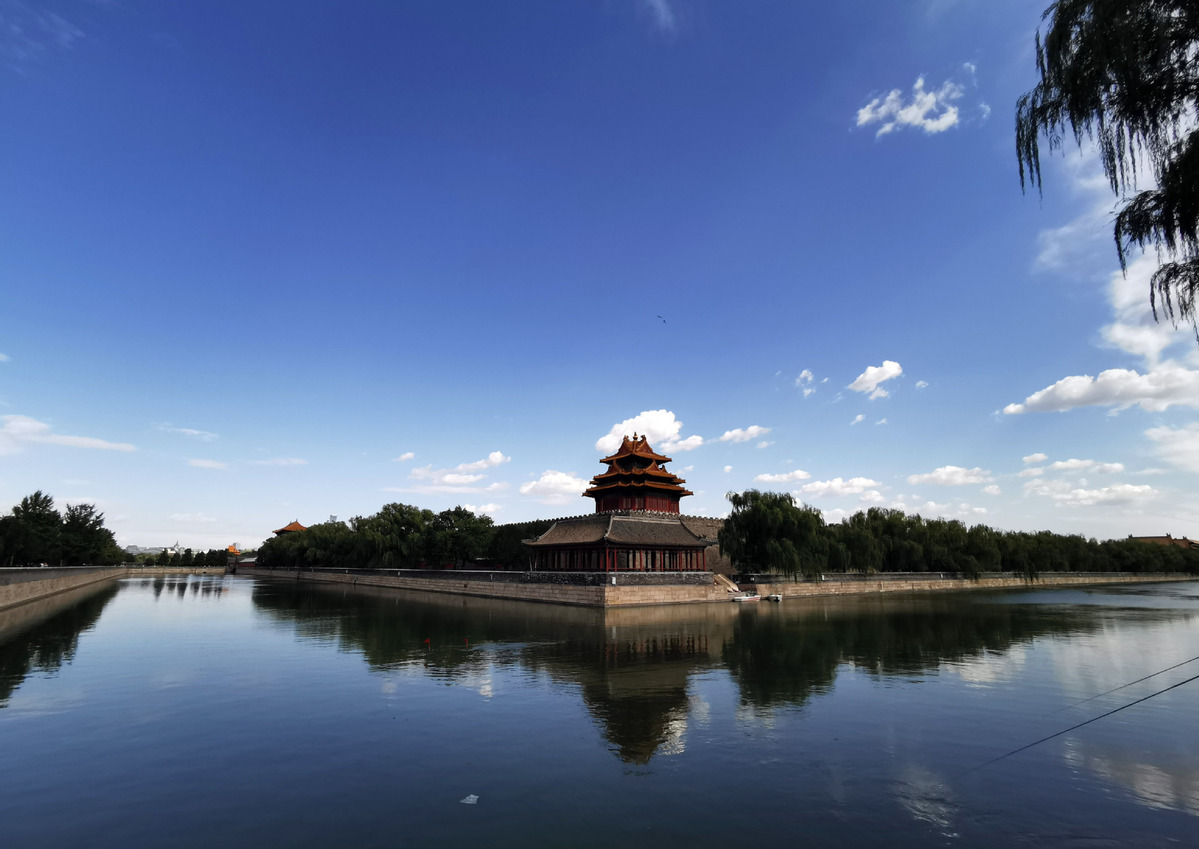
A view of the Corner Tower at the Palace Museum in Beijing on Sept 3, 2020. (Photo: Xinhua)
Three regions in North China once plagued by poor air quality have experienced far fewer days of heavy pollution in the past three months, according to the Ministry of Ecology and Environment.
From Oct 1 to Sunday, the 80 major cities in Beijing-Tianjin-Hebei province cluster, Fenhe-Weihe Plain area and Yangtze River Delta region have seen 100 days with heavy air pollution, down by 47.8 percent from the same period last year and 86.3 percent from 2015, Ministry Spokesman Liu Youbin told a news conference on Tuesday.
The cold period from October to March is usually the time with the worst air pollution in China because of the increase in burning coal for heating.
These cities have also seen continuous improvements in air quality. In total, these cities saw 5,306 days with fairly good air quality - considered to be below 100 on a 0-500 air quality index scale - from Oct 1 to Sunday, up by 3.7 percent year-on-year from 2019 and 22.5 percent from 2015, he continued.
"Beijing has experienced no heavy pollution events at all so far this fall and winter. With fairly good air quality in the past 40 straight days, air quality in the capital has reached its best level compared with previous records for the same period," he said.
Liu warned, however, meteorological conditions in the three regions are forecast to be unfavorable for the dispersal of air pollutants from January to March.
Together with the China Meteorological Administration and local governments in these regions, the ministry will enhance forecasting and roll out measures accordingly to cope with possible heavy air pollution processes, he said.
Xu Bijiu, director-general of general affairs at the ministry, said the average PM 2.5 concentration so far this year in the country's 337 major cities reached 31 micrograms per cubic meter, meaning that China has beaten the World Health Organization interim target 1 of 35 mcg/ cubic m, he said.
"It's not easy to reach the target," he said.


